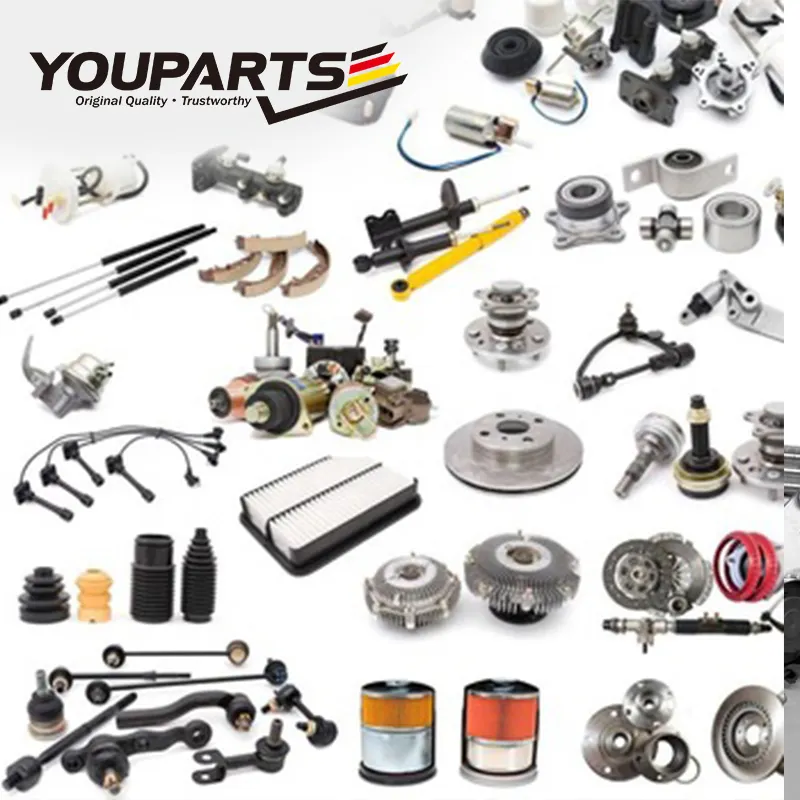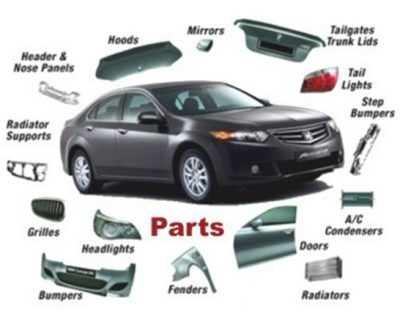Here is a guide that provides pros and cons of each option for ensuring compatibility with automobile parts.
1. Learn about your car’s details
Note the make, year model, engine size as well as the trim level and the model number of your vehicle.
Benefits: Concentrate on components specially designed for your vehicle.
Cons: Some differences within the model year may create confusion (e.g. update mid-year).
2. Use OEM (Original Manufacturer) numbers
Tips: Find the OEM number of the part in an old manual or the part.
Pros: Guarantees an exact fitting; eliminates problems with performance.
Pros: OEM parts can be more expensive than alternatives from the aftermarket.
3. Verify that the VIN is compatible with the vehicle (Vehicle Identification Number)
Tip: Make use of your VIN to ensure compatibility with the websites of suppliers of parts.
Pros: This app provides specific information about the vehicle’s configuration.
Cons: The VIN number is difficult to locate.
4. Cross-Reference Parts Aftermarket Parts
Compare the parts numbers from various manufacturers.
Cons: It can be difficult to find the best choices for your car.
Pros: It may require further research to confirm quality and fitment.
Review Fitment Guidelines
Tip: Take advantage of online tools like compatibility charts, as well as other tools offered by the vendor.
Pros : Fast method to determine if the this part is compatible with your car.
Cons: Incorrect fitting guides can result in mistakes. Double-check.
6. Trim-Level Variations
Be sure to consider variations in engine types or drivetrains (e.g. AWD and FWD).
Benefits: Avoids the need to purchase parts that are not compatible with the trim you have.
Cons: It can be difficult to understand the differences between trim levels if you don’t do thorough research.
7. Verify Regional Compatibility
Make sure the component you purchase is designed for the model of your vehicle (e.g. European models vs. U.S. versions).
Cons: Does not cause problems when using various specifications, such as emissions systems or electric connectors.
Pros: Parts that are imported or specifically designed for specific regions may be difficult to find.
8. Refer to your Owner’s Manual
Refer to the manual to find out what parts are recommended and the specifications for them.
Pros: Provides manufacturer-approved guidance on compatible parts.
Con: Manuals may not include newer aftermarket components.
9. Ask Experts and Mechanical Mechanics
Request guidance from a reputable mechanic or dealership.
Experts can assist you in determining the whether a component is compatible with complex or unusual components.
Cons: Some experts could recommend more expensive alternatives, such as OEM parts.
10. Buy from a trusted vendor
Tips: Buy parts from trusted online retailers or dealers that have solid return policies.
Pros: Reliable vendors often provide more detailed product information as well as customer support.
Cons Price increases with less-reputable vendors.
Final thoughts – Weighing the Benefits & Cons
Cons: Making sure compatibility is maintained will improve the performance, durability, and safety. It will also reduce the possibility of damaged vehicles or returns.
Cons: It could take longer and more research to make sure that parts are compatible.
By following these suggestions and considering the trade-offs, you can make informed choices and avoid common pitfalls. Check out the recommended transportešanas iekarta car parts par chrysler cars for site recommendations including volvo auto salvage, auto parts by part number, bmw parts latvia, auto parts co, undercar parts, auto parts auto, auto parts near me auto parts near me, auto parts parts, auto rts, l auto salvage and more.

Ten Tips For Car Parts’ Durability And Maintenance
The price of your vehicle and its longevity will be affected by the quality and longevity of parts you purchase. Here are 10 suggestions with pros and cons.
1. Find out the life expectancy of a piece
Tips: Examine the expected lifespan of the component Based on the manufacturer’s suggestions and user experiences.
Pros: It lets you to estimate when a component is likely to need replacement, and is used to perform proactive maintenance.
Cons: The estimated life span is dependent on driving habits and environmental conditions.
2. Check for Wear and Tear Resistance
TIP: Pick components that are not prone to wear. This is particularly important for parts that are subject to high strain such as belts and brakes.
Pros: Reduces the frequency of maintenance and replacement costs.
Cons: Products with high-durability are often more expensive in price at first.
3. Consider the Material Quality
Select parts that are constructed of high-quality, durable materials such as carbon composites, stainless steel or steel reinforced alloys.
Pros: Materials with high quality last for longer and stand up to the harshest conditions.
Cons: The price of premium materials could be higher.
4. Look for Parts with Corrosion Resistance
Make sure to select parts which are resistant to corrosion, especially for components which are exposed to moisture, such as brake components, exhaust systems or suspension components.
Pros: Increases the life of the component in areas where there is high humidity and road salt.
Cons: The price for components that are resistant to corrosion can be more expensive.
5. Examine the warranty and return policy
Tip: Confirm the warranty of the component and whether it covers damage or premature failures due to durability issues.
Pros: Solid warranties offer peace ofmind and could reduce your costs in the event that the part is defective before time.
Cons: Certain warranties could be limited or require certain conditions to be met before they can be considered valid.
6. Consider the Maintenance Frequency
Tip: Select items that require minimal maintenance or sealed (e.g. sealed bearings, maintenance free batteries).
Benefits: Saves time and cost on maintenance.
Pros: Certain parts that require low maintenance may cost more upfront or may not be as flexible when it comes to repair.
7. Choose Easy-to-Replace or Service Parts
Choose parts that are easy to replace or service to reduce future costs and maintenance work.
It’s easy to fix or replace, saving time and money.
Pros: Some components that are that are designed to be easily replaced may not last as long as more sophisticated counterparts.
8. Read User Reviews and User Review
Ask a trusted mechanic or read online reviews to determine the durability of a part.
Pros: Provides real-world insights into the long-term durability and maintenance needs of the part.
Cons: Reviews tend to be skewed, and might not be accurate to reflect your actual usage or conditions.
9. Consider Manufacturer Reputation
Tips: Buy only from reputable car part manufacturers who have a long tradition of creating durable and reliable parts.
Cons The brands that are reputable tend to produce components of high quality and durability.
Cons: Branded items are more expensive than alternatives.
10. Think about durability and cost
TIP: While durability is essential but you must also consider your budget. It’s sometimes essential to find an equilibrium between cost and durability particularly when it comes to non-critical parts.
Benefits: Long-term value is attained without the need to spend a lot of money on components that are not essential.
Cons: If you try to save money by buying items that aren’t essential, it can lead to more frequent repair and replacements. This will cost you more at the end.
Think about the pros and pros and.
Consider Durability and Maintenance as a Pro:
Durability: Durable components make it less necessary to replace them often, resulting in savings over time.
Parts that are low maintenance and cost-effective can save you time.
Reliability – Selecting quality parts will mean less breakdowns and a more reliable vehicle.
Neglecting maintenance and durability:
Initial Costs: Durable parts that are of better quality will cost more.
Do not underestimate longevity The best parts wear out over time And ignoring maintenance could cause problems.
Complexity: Some of the most durable parts may be more difficult to replace or repair and can result in higher labor costs.
These tips can help you choose components that are not only durable but also affordable and easy for you to maintain over the life of your vehicle. See the top rated auto-chemical parts for bentley cars for site tips including auto par5s near me, auto parts auto parts near me, parts motors, gadi ke part, gadi ke parts, land auto parts, bmw auto dismantlers near me, this and that auto parts, a2z parts, auto parts in and more.
